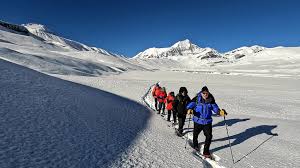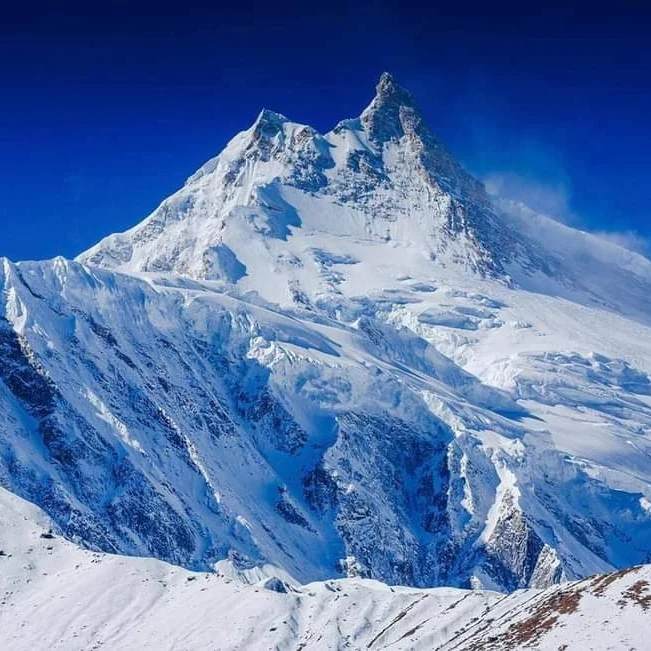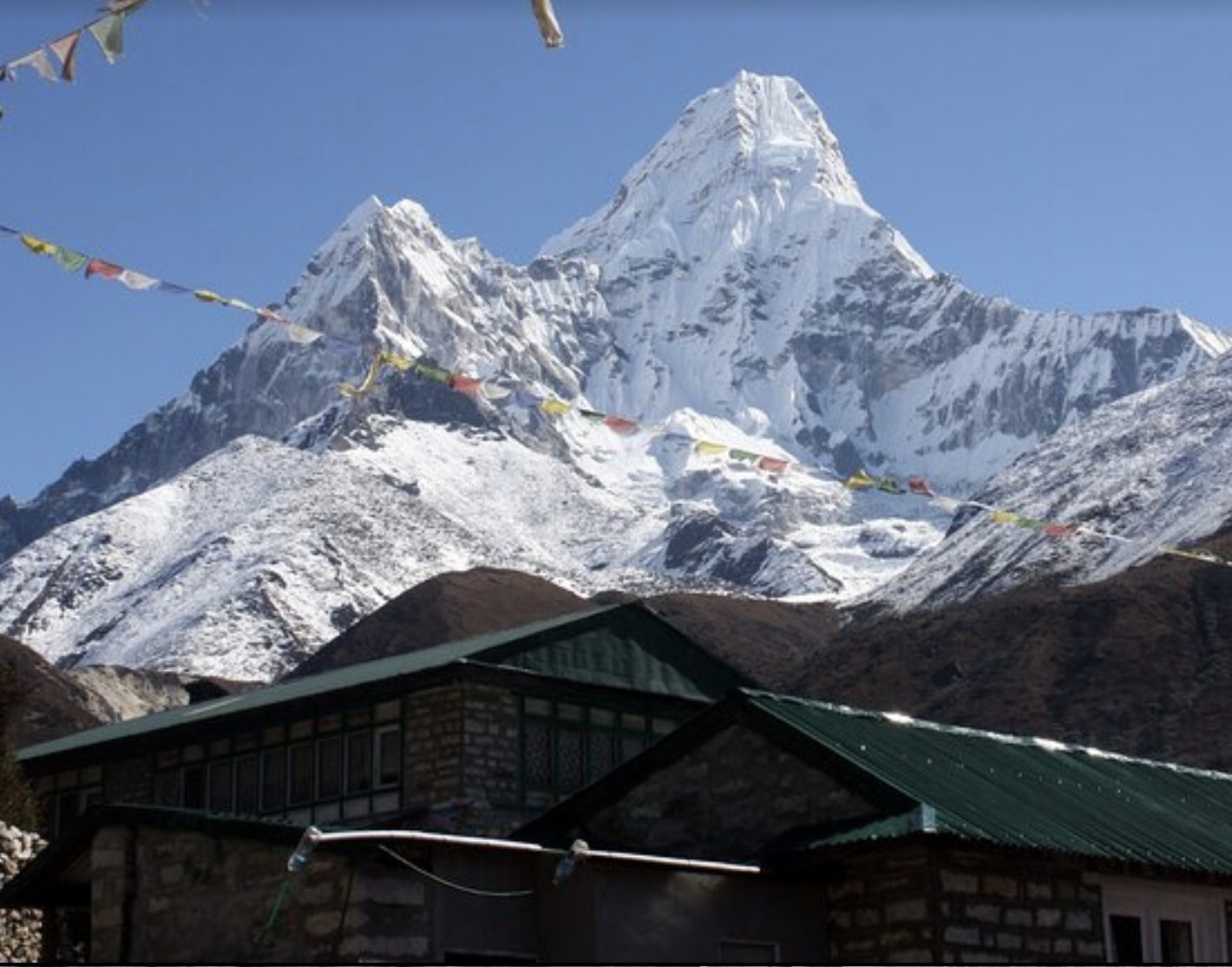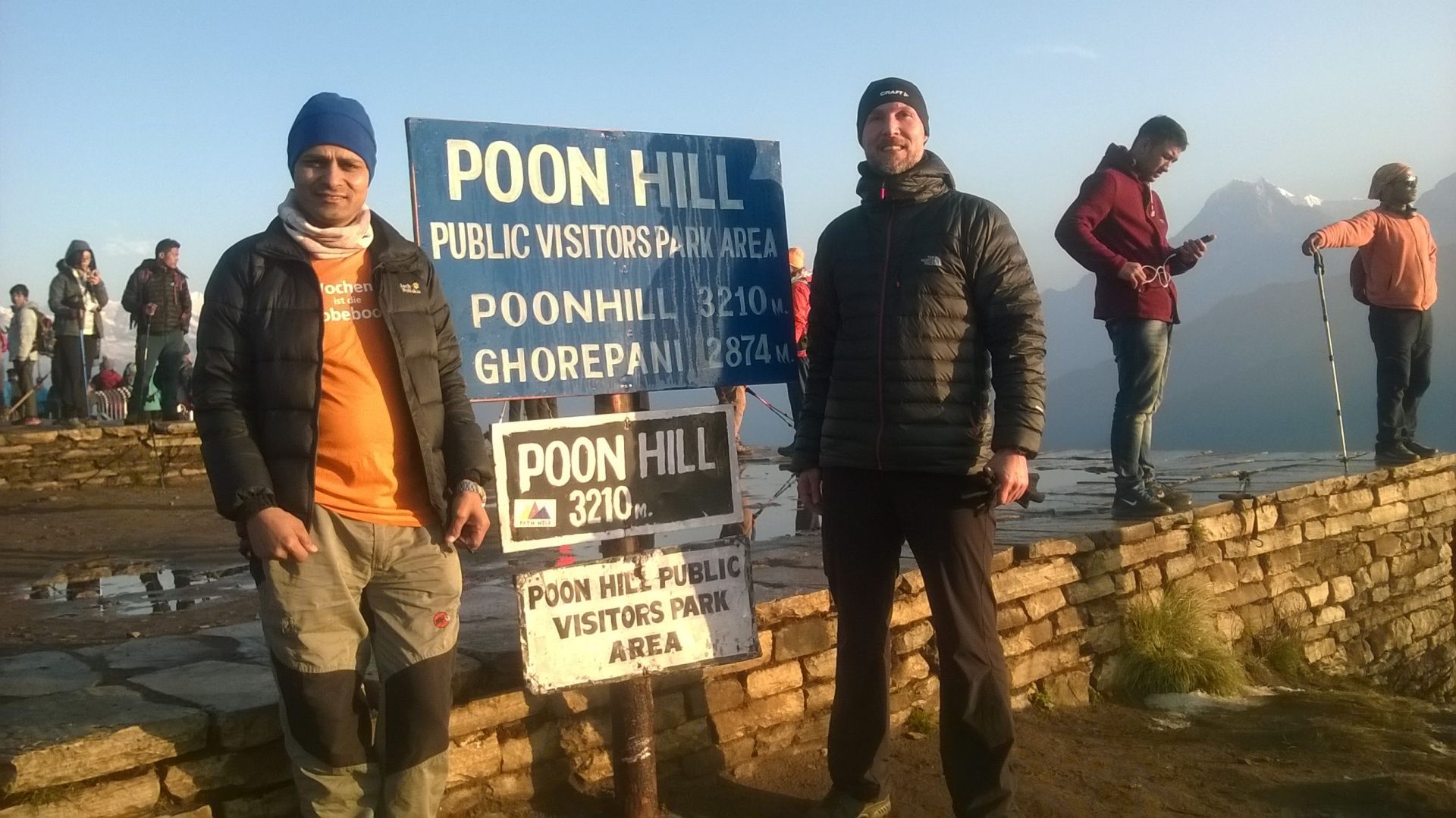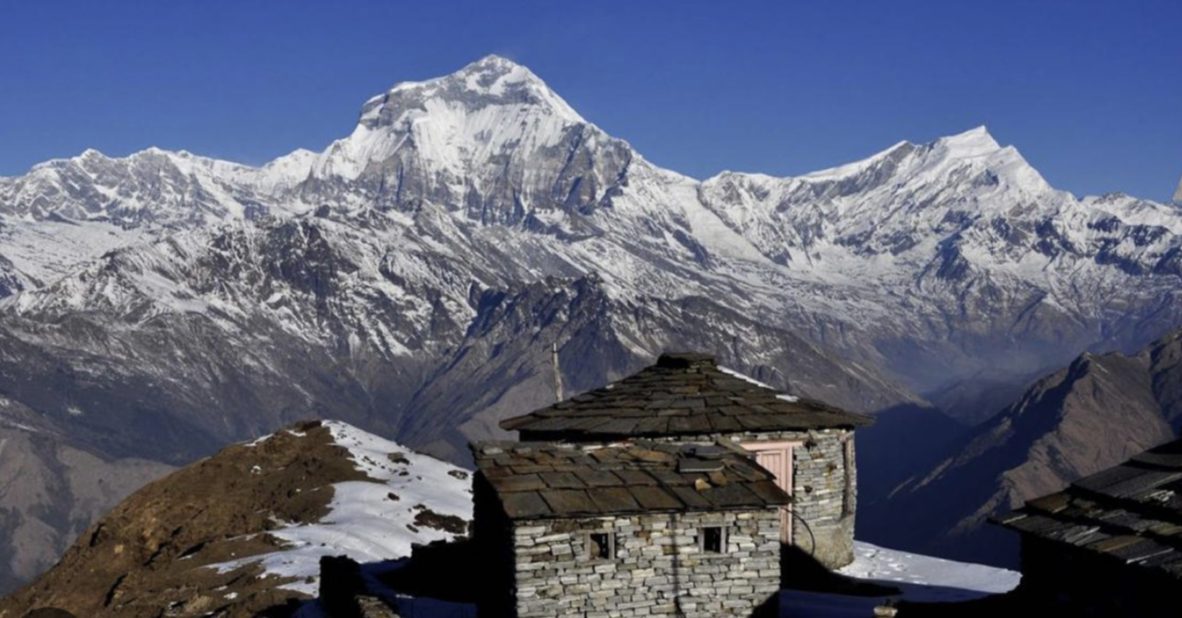Dhaulagiri Circuit Trek Overview
Dhaulagiri Circuit Trekking
Dhaulagiri stands a total of 8167 m / 26795 ft high and stands out to be the seventh tallest mountain in the world; as it falls geographically in between India and Nepal, its all boundaries are kept confined to Nepal itself. Captain William Webb of Britain first visualized Mt Dhaulagiri in 1809. Sanskrit for dazzling or white-“Dhawala,” mountain-“Giri.” In proper meaning, this word denotes, Dhaulagiri seems in its glance-white-colored, with snows-the mighty peak often has been labeled the “White Mountain.”Dhaulagiri is on the western side of the Kali Gandaki River Gorge, some 40 miles northwest of Annapurna. It is the sixth highest peak in Nepal, lying in the Myagdi District. The Dhaulagiri Circuit Trek is one of those few treks that offer a variety of landscapes, from terraced farmlands and villages to rivers, glaciers, and moraine. Gradual acclimatization will be possible while making your way up the high passes, with overwhelming views of Dhaulagiri and its surrounding peaks.
Flora and fauna both have rich variations in the area surrounding Dhaulagiri. It begins from an oak, juniper, and deciduous forests and goes on to alpine meadows filled with ferns and rhododendron flowers in a vibrant manner. These various kinds of ecosystems are habitat to various forms of wildlife and include some endangered species of Nepal like the snow leopard and Danphe bird, both considered prize sightings for wild-life enthusiasts and trekkers alike.
The Dhaulagiri area is one of Nepal’s last true wildernesses, and it offers the opportunity for trekkers to be immersed in pristine natural surroundings. Above all, such rugged beauty of the landscape and the chance to experience such diverse flora and fauna make Dhaulagiri a haven for adventurers and nature lovers.
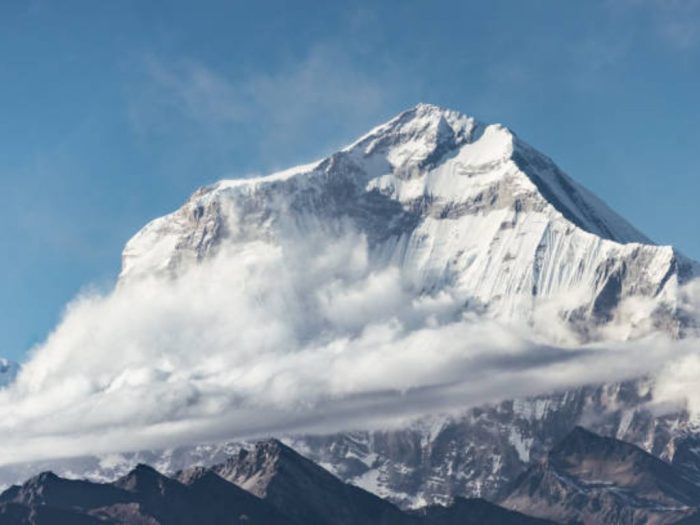
Best Season to Dhaulagiri Trekking
Trekking in Nepal is suitable at any season during the year. But the different seasons provides you different trip experience. Nepal goes through four seasons i.e spring, monsoon, autumn, and winter. However, spring and autumn is is considered as the best time to visit Dhaulagiri trekking. The sky is clear with moderate temperature and astonishing views of the mountains. The forests are clean and greens and blooms various wild flowers which makes the surrounding pleasant. Its a time to regenerates nature natural beauty. On the other hand you can also trek during the winter and monsoon season as well. But it can be challenging and thrilling during these seasons.
Healthy Foods and Accommodations at Dhaulagiri Circuit Trek
Simply, Dhaulagiri trekking is a camps trek, trekkers mostly stay in camps during night. There is no facility of lodges and tea houses while you ascends to higher elevation. You will have to set up tents and camps. The meals will be cooked by the porters who are well trained in cooking. Until Pakoban you can find tea houses and hotels for the stay. There you can have a private room if you want to or you can share the room with your teammates.
Best Guide and Porters for the safety Dhaulagiri Circuit Trek
Nepal Tourism Board mentioned that, ” all the trekkers are required to obtain services of licensed trekking guide and to obtain TIMS card through authorized trekking agencies registered with the government pf Nepal.” Our guides and porters are technically competent and they always carry essential safety equipment, gear, and first aid kids. Your safety is our first concern. So, we assure that you are in a safe hand and make sure you will fully enjoy the trip in Nepal.4
During the trek Altitude Sickness
It is common in mountains above the altitude of 3000 m from sea level. Generally, it occurs when you travel to a high altitude too quickly. Here are some of the symptoms: headache, dizziness, loss of appetite, shortness of breath etc. and its preventive measures are as follows:
- stop and rest where you are
- make sure you’re drinking enough water
- do not smoke, drink alcohol, or exercise
- eating foods and drinking fluids that contain carbs
Preventing Altitude Sickness (AMS):
- Rest Well: Ensure that you rest well before starting your trek.
- Stay Hydrated: Continue drinking plenty of water during the journey.
- Balanced Nutrition: Maintain the balance of salt and sugar through proper eating habits and not skipping meals.
- Keep Warm: Layer up to remain warm without profuse sweating.
- Controlled Breathing: Breathe deeply and steadily from your diaphragm to maximize lung capacity. Maintain a comfortable walking speed that will allow for controlled breathing. Nasal breathing avoids drying your throat—wearing a muff or scarf in high altitudes might be of use.
- Pace Yourself: It’s not a competition. Pace yourself with a maintainable and Server consistent pace instead of exhausting yourself too early and taking many rest stops. Stop and admire the stunning views.
Travel Insurance for a Safe
Any trek in Nepal demands travel insurance. Before buying it, read the insurance documentation thoroughly and understand the coverage. While buying ensure that it covers high altitude trekking, emergency, hiking, mountaineering, and adventure sports. Travel insurance offer you with peace of mind and financial protection in the event of an unforeseen accident.
https://www.nepalholidaytreksandtours.com/activities/trekking-in-nepal
Dhaulagiri Circuit Trek Highlights
- Sixth highest peak in Nepal and world seventh highest mountain Dhaulagiri (8167 m)
- Less crowded and peaceful environment
- Off- beaten route and adventurous experience
- Exploring the unique lifestyles of locals in this region
- Crossing two high passes (French and Dhampus)
- Hiking to three wonderful base camps ( Italian, Glacier, and Dhaulagiri)
Dhaulagiri Circuit Trek Itinerary
Expand allDay 1: Arrival in Kathmandu and Transfer to hotel
Our office representative will be waiting for you at the Tribhuvan International airport to warmly welcome
you with a garland of flowers in their hands and your names in their placard. You will be transferred for
recreation and overnight stay at Hotel in Kathmandu.
Day 2: Prepration Day for the Trek and Sightseeing in Kathmandu
We’ll start by making sure you have all the equipment and permits you’ll need for your adventure on the
day of preparation for your trek and sightseeing in Kathmandu. We’ll go over your trekking gear, make any last-minute changes, and talk about the schedule to make sure you’re ready for the next few days. We’ll go on a guided tour of some of Kathmandu’s most famous sights in the afternoon, such as the revered Pashupatinath Temple, the magnificent Swayambhunath Stupa (Monkey Temple), and the historic Durbar Square. Before starting your hike, this day will not only help you get used to the local way of life, but it will also give you a chance to fully experience the energetic atmosphere of Nepal’s capital.
Day 3: Drive from Kathmandu to Beni
Traveling through the heart of Nepal’s varied landscapes, the drive from Kathmandu to Beni is a
picturesque experience. You’ll see the striking change from the busy cityscape to the peaceful countryside
as we travel. With its picturesque villages, terraced fields, and verdant valleys, the route offers stunning
vistas of the Himalayas in the distance. This drive will be an essential component of your Nepalese
adventure as we cross multiple rivers and take in the colorful local way of life. As we travel to Beni, the
starting point of your trekking adventure, it’s a good idea to unwind and take in the breathtaking scenery
because the road can be winding and uneven.
Day 4: Trek from Beni to Babiyachaur (950 m)
A delightful introduction to the area’s natural beauty is the trek from Beni to Babiyachaur. We’ll travel
through verdant terraced fields and thick forests as we leave Beni, with the magnificent Himalayas serving
as a breathtaking backdrop. The trail rises gradually and provides a peaceful stroll through traditional
villages where you can get a taste of the way people live and are friendly. We’ll take in the colorful local
flora and fauna as well as the tranquil sounds of the neighboring rivers along the way. By the time we
arrive at Babiyachaur, which is situated at an elevation of 950 meters, you will have become used to the
trekking pace and fully experienced the serene allure of Nepal’s rural landscape.
Day 5: Trek from Babiyachaur to Phedi (1100 m)
Trekking from Babiyachaur to Phedi is an enthralling adventure that ascends gradually through verdant
countryside and lively rural communities. The trail meanders through terraced fields and lush forests as we leave Babiyachaur behind, providing expansive views of the surrounding hills and valleys. Energizing is the gradual ascent to Phedi at 1100 meters, where there are chances to see local life and customary
farming methods up close. As you acclimate to the trekking pace, this portion of the trail lets you
experience the tranquil rhythm of the Nepalese countryside, setting the stage for our delightful destination of Phedi, where you can unwind and take in the breathtaking scenery.
Day 6: Trek from Phedi to Sibang (1800 m)
Trekking from Phedi to Sibang offers a gratifying climb through some of the most picturesque scenery in
Nepal. The trail climbs steadily as we leave Phedi behind, passing through verdant, temperate forests and
charming terraced fields. We’ll travel through thriving neighborhood villages along the way, where you can take in the customs and warmth of traditional Nepalese culture. Traveling to Sibang, at an elevation of
1800 meters, offers stunning vistas of the neighboring valleys and mountains, creating a tranquil
environment for your hike. This portion of the hike tests your endurance but also offers breathtaking views and a closer connection to the area’s natural beauty.
Day 7: Trek from Sibang to Jugepani (1500 m)
Trekking through the lush landscapes of Nepal’s Sibang to Jugepani trek offers an enthralling descent.
We’ll travel along a lovely trail that meanders through lush forests and terraced fields as we leave the high
altitudes of Sibang. The drive up to Jugepani at 1500 meters is notable for its breathtaking scenery and the lively rural culture found there. You’ll meet friendly locals and take in expansive views of the surrounding valleys. As we make our way to our destination, this section of the trek offers a wonderful blend of natural splendor and local culture, making it both refreshing and rewarding.
Day 8: Trek from Jugepani to Bagar (2000 m)
Trekking from Jugepani to Bagar is an enthralling ascent that offers an amazing blend of scenic beauty
and cultural immersion. The trail gradually rises through verdant forests and terraced fields as we leave
Jugepani, providing expansive views of the nearby hills and valleys. You’ll travel through charming villages along the way where you can witness vibrant local customs and traditional Nepalese lifestyles. Aside from being a physical challenge, the trip to 2000 meters above sea level offers breathtaking views and the opportunity to immerse oneself in the quiet beauty of Nepal’s rural areas.
Day 9: Trek from Bagar to Dovan (2500 m)
The exciting climb that highlights the region’s varied beauty is the trek from Bagar to Dovan. The trail
gradually climbs out of Bagar through rough terrain and dense forests, providing breathtaking views of the surrounding valleys and peaks. The journey is made more charming by the lush vegetation and cascading waterfalls you’ll come across along the way. When you arrive at Dovan at 2500 meters, you’ll find yourself in a more alpine setting with lower temperatures and wide-open views. This exciting and beautiful portion of the hike offers the ideal balance of natural beauty and a fulfilling sense of advancement as you climb deeper into the mountains.
Day 10: Trek from Dovan to Sallaghari (3100 m)
You can venture farther into the magnificent Himalayas on the rewarding trek from Dovan to Sallaghari.
The trail steepens and winds through alpine meadows and rocky paths as we leave Dovan behind,
providing us with amazing views of massive peaks and vast valleys. Dramatic changes in the landscape,
including rocky terrain and the sporadic sight of wildlife acclimated to the high-altitude environment,
characterize the journey to Sallaghari at 3100 meters. Every step you take on this strenuous yet
exhilarating trek will bring you closer to the breathtaking beauty and tranquility of the high Himalayas.
Day 11: Trek from Sallaghari to Italiyan base camp (3500 m)
Trekking through some of the most breathtaking high-altitude landscape in the area, the route from
Sallaghari to Italian Base Camp is thrilling. The trail climbs through rocky terrain and alpine meadows as
we leave Sallaghari, providing expansive views of snow-capped peaks and striking ridges. The journey to
3500 meters Italian Base Camp is distinguished by its magnificent views and a feeling of being encircled
by the majesty of the Himalayas. This hike offers a special chance to take in the tranquil beauty of the high
mountains and the sense of accomplishment that comes from reaching a significant adventure milestone.
Day 12: Rest Day in Italiyan Base Camp
We take advantage of our well-earned rest day at Italian Base Camp to rejuvenate and fully enjoy the
breathtaking high-altitude environment. This tranquil location, tucked away at 3500 meters, provides
amazing views of massive glaciers and towering peaks. You can unwind, get used to the altitude, and take
your time exploring the neighboring trails. Use today to take in the breathtaking scenery, take special
pictures, and bask in the peaceful atmosphere of the Himalayas. This is the ideal moment to take stock of
your journey thus far and get ready for the exciting days ahead.
Day 13: Trek from Italiyan Base Camp to Japanese Base Camp (4000 m)
The trek from Italian Base Camp to Japanese Base Camp is an invigorating ascent that brings you deeper
into the heart of the Himalayas. As we leave the lush surroundings of Italian Base Camp, the trail gradually climbs through rugged terrain and alpine landscapes, with increasingly spectacular views of snow-capped peaks and expansive glaciers. Reaching Japanese Base Camp at 4000 meters, you’ll be surrounded by dramatic mountain vistas and the crisp, fresh air of high altitude. This trek not only challenges your stamina but also rewards you with awe-inspiring scenery and a profound sense of accomplishment as you approach one of the high-altitude highlights of your adventure.
Day 14: Trek from Japanese Base Camp to Dhaulagiri Base Camp (4700 m)
Trekking to Dhaulagiri Base Camp from Japanese Base Camp is an amazing adventure that places you at
the center of one of the most famous mountain ranges in the world. The trail steadily climbs through broad glaciers and rocky, rugged terrain as we leave Japanese Base Camp, providing unmatched views of the massive Dhaulagiri massif and surrounding peaks. At 4700 meters, Dhaulagiri Base Camp offers a
breathtakingly beautiful scenery, where the vastness of the mountains and the tranquility of the high
altitude setting combine to create an experience that will never be forgotten. This trek offers a rare chance
to get up close and personal with the Himalayas’ majesty, and it is both rewarding and challenging.
Day 15: Trek from Dhaulagiri Base Camp to Hidden Valley (5166 m)
The thrilling climb from Dhaulagiri Base Camp to Hidden Valley takes you through some of the most
breathtaking and secluded scenery in the Himalayas. The trail rises through untamed landscapes and
across vast glaciers as we leave the base camp, providing breathtaking views of high peaks and deep
valleys. Hidden Valley, at 5166 meters, offers a striking and remote high-altitude scenery where you can
take in the tranquil beauty of pristine snowfields and imposing mountains. This strenuous hike offers a
unique chance to take in the majesty of the high Himalayas and the thrill of arriving at one of the trek’s
most secluded and breathtaking locations.
Day 16: Trek from Hidden Valley to Kalopani (4900 m)
The hike from Hidden Valley to Kalopani is a breathtaking descent that takes you from the tranquility of
Hidden Valley at a high altitude to the verdant, lower-altitude scenery of Kalopani. The trail descends
through rugged terrain and colorful alpine meadows, providing sweeping views of the surrounding peaks
and valleys as we leave the secluded beauty of Hidden Valley behind. When you reach Kalopani at 4900
meters, the scenery changes dramatically, and you can unwind and take in the changing scenery. This trek
is a memorable and beautiful adventure because it combines the excitement of high-altitude trekking with
a gradual return to more temperate surroundings.
Day 17: Trek from Kalopani to Yak kharka (3500 m)
Trekking from Kalopani to Yak Kharka is a picturesque descent that takes you progressively through a
variety of terrains. The trail meanders through scenic valleys and alpine meadows, offering breathtaking
views of the surrounding mountains as we leave the elevated terrain of Kalopani. At 3500 meters, you’ll
find a more tranquil setting with wide-open grassy fields and a calm atmosphere at Yak Kharka. This
portion of the journey allows you to enjoy the beauty of the shifting landscapes as you acclimate to lower
elevations, providing a pleasant change from the high-altitude challenge to a more leisurely pace.
Day 18: Trek from Yak kharka to Marpha (2600 m)
Trekking from Yak Kharka to Marpha is a delightful descent into a quaint village at lower altitudes after a
tranquil high-altitude setting. The trail offers breathtaking views of the surrounding landscapes as it gently descends through picturesque valleys and terraced fields as we leave Yak Kharka behind. At 2600 meters, Marpha is well known for its apple orchards, traditional architecture, and hospitable atmosphere. This trip offers you a more leisurely pace and an opportunity to immerse yourself in the region’s rich cultural heritage, making it an ideal way to cap off your trek with a mix of local charm and scenic beauty.
Day 19: Trek from Marpha to Jomsom (2675 m)
Trekking through the stunning Mustang region’s landscape on the way from Marpha to Jomsom is a
delightful and picturesque experience that descends gradually. The trail winds through quaint villages and
wide valleys as we leave Marpha behind, providing breathtaking views of the surrounding mountains and
the Kali Gandaki River. The drive to Jomsom, at 2675 meters, is a leisurely way to wrap up your hike.
Here, you can explore this energetic town, which is well-known for its distinctive Tibetan culture and
breathtaking landscapes. This last section offers a seamless transition from the calm splendor of Marpha
to the lively energy of Jomsom, where you can relax and reminisce about your trekking experience.
Day 20: Fly from Jomsom to Pokhara
The flight from Jomsom to Pokhara is an amazing aerial experience that provides amazing overhead views
of the Himalayan scenery. You’ll be treated to a wide-angle view of snow-capped peaks, deep valleys, and
verdant hills as we board the small aircraft. The quick, picturesque flight gives you a unique perspective of
the area you’ve hiked through as it passes over the breathtaking Annapurna and Dhaulagiri ranges. When
you arrive in Pokhara, a bustling city renowned for its stunning lakes and laid-back vibe, your trekking
journey will come to a peaceful and picturesque conclusion.
Day 21: Drive from Pokhara to Kathmandu
The picturesque drive from Pokhara to Kathmandu provides a window into Nepal’s varied topography and
lively local culture. After departing from the scenic city by the lake, the road meanders through verdant
valleys, terraced farms, and quaint towns. Along the way, you’ll encounter the calm beauty of the
countryside and the vibrant energy of small towns. Enjoying views of the surrounding hills and rivers, the
drive offers a unique opportunity to observe rural Nepalese daily life. This road trip offers a unique and
engaging travel experience in addition to connecting two important locations.
Day 22: Depature at Tribhuwan International Airport
We’ll make sure everything goes smoothly and efficiently as we get ready to see you off at Tribhuwan
International Airport, ending your Nepalese adventure and starting your next adventure. This busy airport
is the entryway to your next location and is situated in Kathmandu. We’ll help with the check-in process,
lead you through security, and provide advice on how to have a comfortable trip. Before boarding your
flight, pause to contemplate the amazing experiences and breathtaking scenery you’ve had, and take in
the last vistas of Nepal. We wish you safe travels and look forward to seeing you on another adventure!
If the above Everest Base Camp Trek itinerary does not meet your needs, we can design individualized travel plans based on your preferences and specifications.
Plan My TripDhaulagiri Circuit Trek Cost Includes
- Airport pick up and drop by private vehicle
- Three times Three meals a day- Breakfast, Lunch, Dinner and 3 cup’s of tea/Coffee a day during the trek.
- Accommodation in tea house during the trek.
- In a daytime tea break with cookies every day.
- Seasonally fruits and desserts on the trek after dinner every day.
- You will be under observation with a pulse oximeter to have your oxygen levels and heart rate measured twice a day during the trek. This is to catch the signs of Altitude Mountain Sickness (AMS) early, thus making trekking safer.
- Nepal Holiday Treks and Tours, (-20 degree sleeping bag) and a duffel bag for the trekking, but you need to refund to the office after the trip.
- Trekking permits and TIMS Cards
- An experienced, helpful, knowledgeable, friendly, English-speaking, well trained, government license holder Guide with all his salary, food, Drinks, accommodation, equipment, transport, and insurance.
- Normal First aids kit box.
- 3 Night hotel in Kathmandu 1 Night hotel in Pokhara
- Jomsom to Pokhara by flight
- Pokhara to Kathmandu by tourist bus
- One tour guide and car for sightseeing in Kathmandu
- All taxes and company service charges
Dhaulagiri Circuit Trek Cost Excludes
- International airfare and visa fees
- Personal expenses of bar and beverage bills, wifi, hot shower, bottle of water, extra porters, laundry or any other things which are not mentioned by the company
- Your trekking gears and extra nights in a certain destination
- Your travel insurance which should include the emergency rescue
- Tips for your guide and porter which is compulsory.
- A strong, helpful, porters with proper safety equipment and walking equipment his salary, food, drinks, accommodation, insurance, (one porter for two people he will carry bag pack max 20-25kg).
- Extra expenses due to any event such as strikes, weather conditions, or flight delays.
Upcoming Departures
Customer Reviews
Write a ReviewDhaulagiri Circuit Trek FAQs
Why trek with Nepal Holiday?
Nepal Holiday offers expert guides, well-planned itineraries, and excellent service to ensure a safe and memorable trekking experience.
Do I need prior trekking experience?
Dhaulagiri Circuit Trek is a challenging trek recommended for experienced trekkers with good fitness levels.
Are there any age requirements for mountain trekking?
There is no strict age limit, but trekkers should be physically fit and prepared for high-altitude trekking.
Is trekking in mountain areas safe for solo female travelers?
Yes, generally speaking, Nepal is safe for solo female travelers. Hiring a guide enhances security and the overall experience.
How challenging is the trek?
The Dhaulagiri Circuit Trek is strenuous, involving high passes, glacier crossings, and remote trails.
How many kilometers does the Dhaulagiri Circuit Trek cover?
The length of the trek is about 140 km and takes approximately 18 to 20 days.
Do your guides have trekking guide certificates?
Yes, all guides are licensed and trained.
I am a vegetarian. Is that a problem?
No, vegetarian meals are available everywhere.
What if I am delayed by bad weather or sickness?
Extra hotel nights and food are at your own expense.
Can I have a private room?
Private rooms are available in Kathmandu, and some lower elevation facilities.
What are accommodations like on the trek?
Lower elevations: teahouses, Higher elevations: camping.
What kind of a bag will the porters carry?
Porters carry a duffel bag (up to 15kg). You should carry a small daypack.
Do I Need Prior Trekking Experience?
No prior trekking experience is required. You can easily do the trek if you are physically fit and have an adventurous spirit.
What Kind of Physical Conditioning is Required for Preparing for a Trek?
To prepare for the trek, we recommend a combination of cardiovascular exercise, strength training, and endurance-building activities. Regular hiking, running, stair climbing, or biking can increase your endurance. Strength training exercises that focus on legs, core, and overall body fitness will help you cope with the strain of high-altitude trekking.
Can I Rent a Sleeping Bag, Down Jacket, and Duffle Bag?
Yes, sleeping bags, down jackets, and duffle bags can be hired. for the trekking but you need to return to the office.
Is There a Place to Store Things Not Needed for the Trek?
Yes, most hotels in Kathmandu provide free storage facilities where you can leave any items that you will not be needing during the trek.
What Should I Do with My Passport, Medications, and Other Valuable Belongings?
It is advisable to carry a copy of your passport, travel insurance, and other important things in your daypack. If you are taking any daily medication, please bring it along with you in your daypack for your ease. You can leave unnecessary stuff in your hotel or our Kathmandu office safely.
Is It Possible to Get Private Rooms During the Trek or in Kathmandu?
Private rooms in teahouses along the hiking trail cannot be guaranteed, especially during the high seasons. You may get private rooms without any extra fee during the off-season. Most of the teahouses have twin-sharing rooms, with dormitory-style accommodation in some areas. If you wish to get a private room in Kathmandu, we can arrange that for an added fee per night.
Do Your Guides Have Official Trekking Certifications and First Aid Training?
Yes, our trekking guides are professional-grade license holders certified by the Hotel Management and Tourism Center. They have completed a 45-day intensive training course and are specialists in high-altitude first aid. They are English- and other language-speaking (on request at an additional cost).
What If I Fall Sick in the Mountains?
Our guides are on standby 24/7 to assist you. They carry a first-aid kit and an oximeter to measure oxygen levels, to ensure that trekkers are in a fit state to carry on. In the event of serious altitude sickness or any other serious medical condition, our guides will immediately call our Kathmandu office. We are prepared to arrange emergency transportation, or helicopter evacuation if necessary.
What is Your Cancellation trip?
There is no refund of a 20% deposit fee in the cancellation of the trip due to any other reason but we welcome rescheduling your trip on any future day. After paying the full cost of any trip, you will receive a refund but the cancellation charge 20% is deducted from you. You have to give written notice of cancellation in order to cancel any trip.
Why Choose Our Trekking Services?
Our company has a high success rate of organizing successful trekking trips with highly experienced and well-trained guides. We are expert in client safety, satisfaction, and responsible tourism. Beyond adventure, we also practice giving back to the local communities through various social activities, so that our travel experiences make a positive impact on the region.
What should I know about booking my flights to / from Nepal? Di I need to plan extra days in case of delays?
We recommend adding a one- to two-day buffer period before and after your trek in case of unforeseen flight delay, especially in remote areas like Lukla. This also leaves some time to buy last-minute gear. We are not responsible for missed overseas flights due to unforeseen cancellations or delays.
What is the temperature rating of the sleeping bag that you lend to trekkers?
The sleeping bags we provide for trekkers are designed to withstand temperatures of up to -10°C (14°F). If you require more heat, our guides can arrange additional blankets at the teahouses on the trekking route.
What sort of insurance do I need? How can I obtain a policy?
Travel insurance is an absolute necessity for all of our trekking trips. Your policy must include medical evacuation to the highest altitude that you will reach on your trek. It should also include coverage for unexpected expenses such as flight cancellations due to bad weather, medical attention, theft, loss, or damage to your belongings. Good travel insurance companies usually offer policies online so you can purchase coverage in advance.
What are the necessary items that I should pack for my trip?
For a full list of equipment required, refer to the Equipment page. If you prefer to buy or hire trekking equipment in Kathmandu, ensure you set aside extra time before beginning your trek.
What type of daypack should I bring?
When selecting a daypack, pick one that is light in weight but that still has enough space to bring your daily essentials such as water, snacks, extra clothing, and personal items.
Is it necessary to bring toilet paper for the trek?
While you can purchase toilet paper at teahouses throughout the trek, it is costly. We recommend that you bring your own supply. Additionally, don’t forget to bring personal hygiene products like soap, towels, hand sanitizer, and wet wipes.
If I am sick can I continue the trek after a day’s rest?
If you fall ill, the decision is based on your status. Altitude sickness requires an immediate descent to a lower elevation, and recovery can take several days. For group trekkers, inquire with your guide whether it is possible to rejoin the group. Private trekkers with a flexible schedule can possibly resume once they recover.
What kind of trekking boot would be best for the trek?
Proper footwear is crucial for an effective trek. Invest in sturdy, comfortable trekking boots with a water-resistant lining. Hard-solved ankle-supported boots are ideal for trekking over rough terrain, allowing comfort and stability on the trail.
Dhaulagiri Circuit Trek Equipment Lists
General info:
- Sleeping Bag and duffle bag: Four-season sleeping bag with a rating of -20°C by company after you have to refund on company.
- Insulated Jacket: A puffy and warm down jacket suitable for winter by company after you have to refund on company.
- Daypack: 25-30 liter backpack rain cover to carry one’s daily essentials
Clothing:
- Thermal base layers
- Trekking shirts (quick-dry)
- Fleece jacket and down jacket
- Waterproof jacket and pants
- Trekking trousers
- Gloves (inner and outer)
- Warm hat and sun hat
- Trekking socks
Footwear:
- Sturdy trekking boots
- Camp shoes/sandals
- Gaiters (optional)
Accessories:
- Trekking poles
- Backpack (50-60L) and daypack (20-30L)
- Sunglasses (UV protection)
- Headlamp with extra batteries
- Water bottles and purification tablets
Similar Tours
Short Manaslu Tsum Valley Trek
An 17 days trek, the Short Manaslu and Tsum Valley Trek engages trekkers to an adventure close to Mt....
Gokhyo-Renjola Pass trek
Your getaway from the typical trekking route to Everest Base Camp is the Gokyo Renjo-La Pass Trekking. This trekking...
Jomsom Muktinath Trek
Nepal is a stunning country in the Himalayas with magnificent mountains. These mountains’ foothills make for ideal walking terrain....
Ghorepani-Poonhill-Ghandruk Trek
The sheer grandeur of Nepal’s many landscapes and geographical features makes it unimaginably beautiful. There are many interesting, quaint,...
Khopra Danda Trek with Khayer Lake
One of the most beautiful trekking routes in the Annapurna region is the Khopra Danda Trek. For trekkers who...

